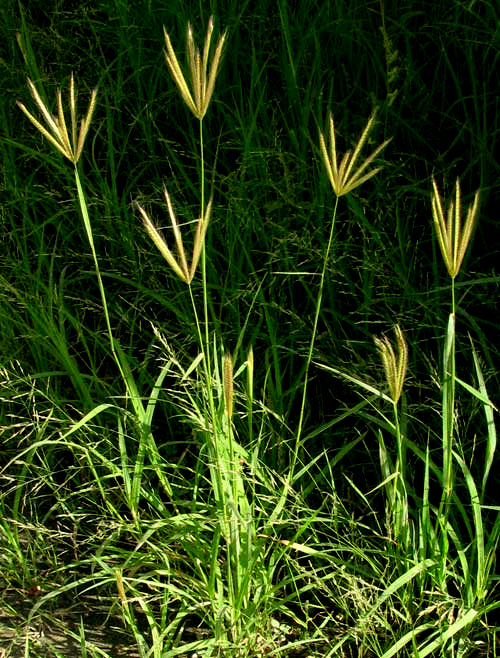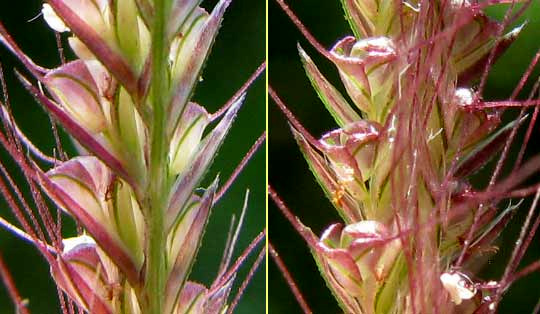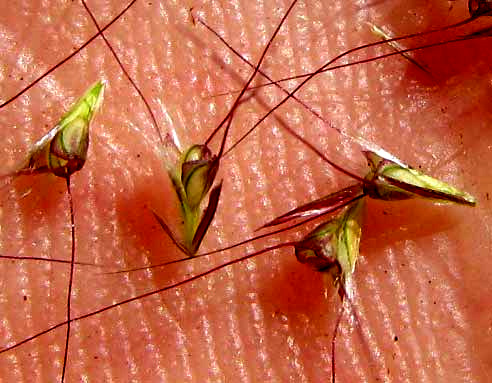Excerpts from Jim Conrad's
Naturalist Newsletter
from the August 15, 2010 Newsletter issued from Hacienda Chichen Resort beside Chichén Itzá Ruins, central Yucatán, MÉXICO; limestone bedrock, elevation ~39m (~128ft), ~N20.676°, ~W88.569°
CHLORIS BESIDE THE ROAD
In certain lights and settings even the lowliest weed presents itself with charm, and such was the case the other day beside the road in Pisté, as shown below:

Like last week's Goosegrass, this species sets its flowering heads' spreading, spiky racemes atop a slender flower stalk. In other words, it has a digitate inflorescence. One English name for the species in the picture is Windmill-grass. It's CHLORIS BARBATA, in the same Grass Family tribe as Goosegrass and Bermuda Grass.
Though at a distance Windmill-grass's digitate inflorescences look like those of last week's Goosegrass, up close there are big differences. You might remember that Goosegrass's flowers bore no needle-like bristles -- shown in last week's photo at www.backyardnature.net/n/10/100808gi.jpg. Now look at Feather Finger-grass's flowers below

Hairlike bristles, or "awns," arise from the flowers up to half an inch long (12 mm). However, as with Goosegrass, all the flowers are packed on one side of the raceme midrib, or rachilla.

Above several mature flowers fallen off their rachillas rest in my palm and you can see -- especially on the center flower -- that the flowers are hairy. Goosegrass's flowers were hairless, or "glabrous."
Windmill-grass is native to the American tropics but has spread to other tropical lands as an invasive weed.
By the way, that name Chloris has a history. In ancient Greek mythology Chloris was a nymph associated with spring, flowers and new growth. Her Roman equivalent was the goddess Flora. She was abducted by Zephyr, the god of the west wind, who later married her. Ovid wrote of her: "As she talks, her lips breathe spring roses: I was Chloris, who am now called Flora." In sculpture and paintings Chloris often is portrayed as an alabaster-white maiden with a rose vine awkwardly issuing from her mouth. Who knows what there is about our Pisté grass that reminded the old botanists of nymph Chloris?